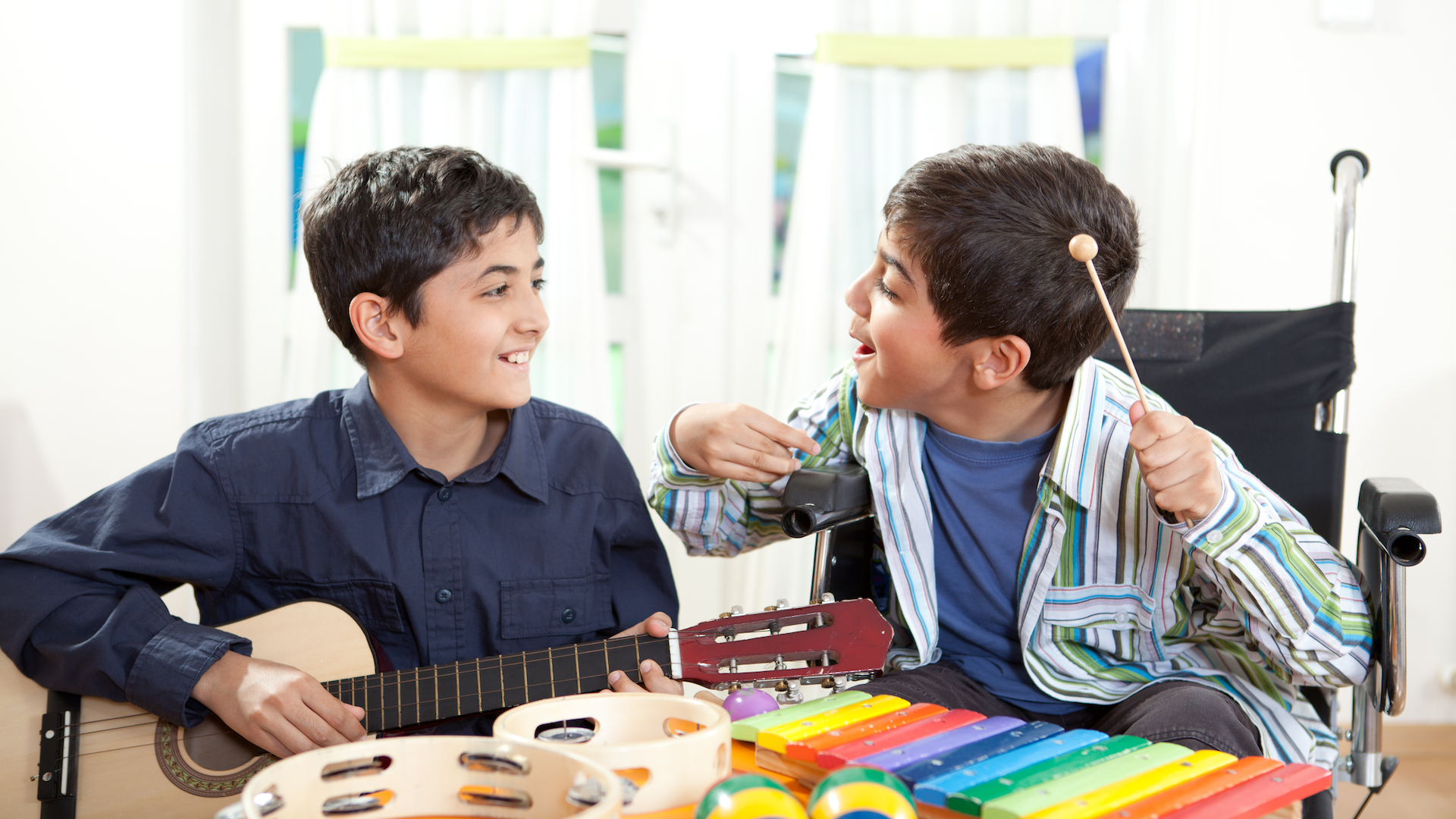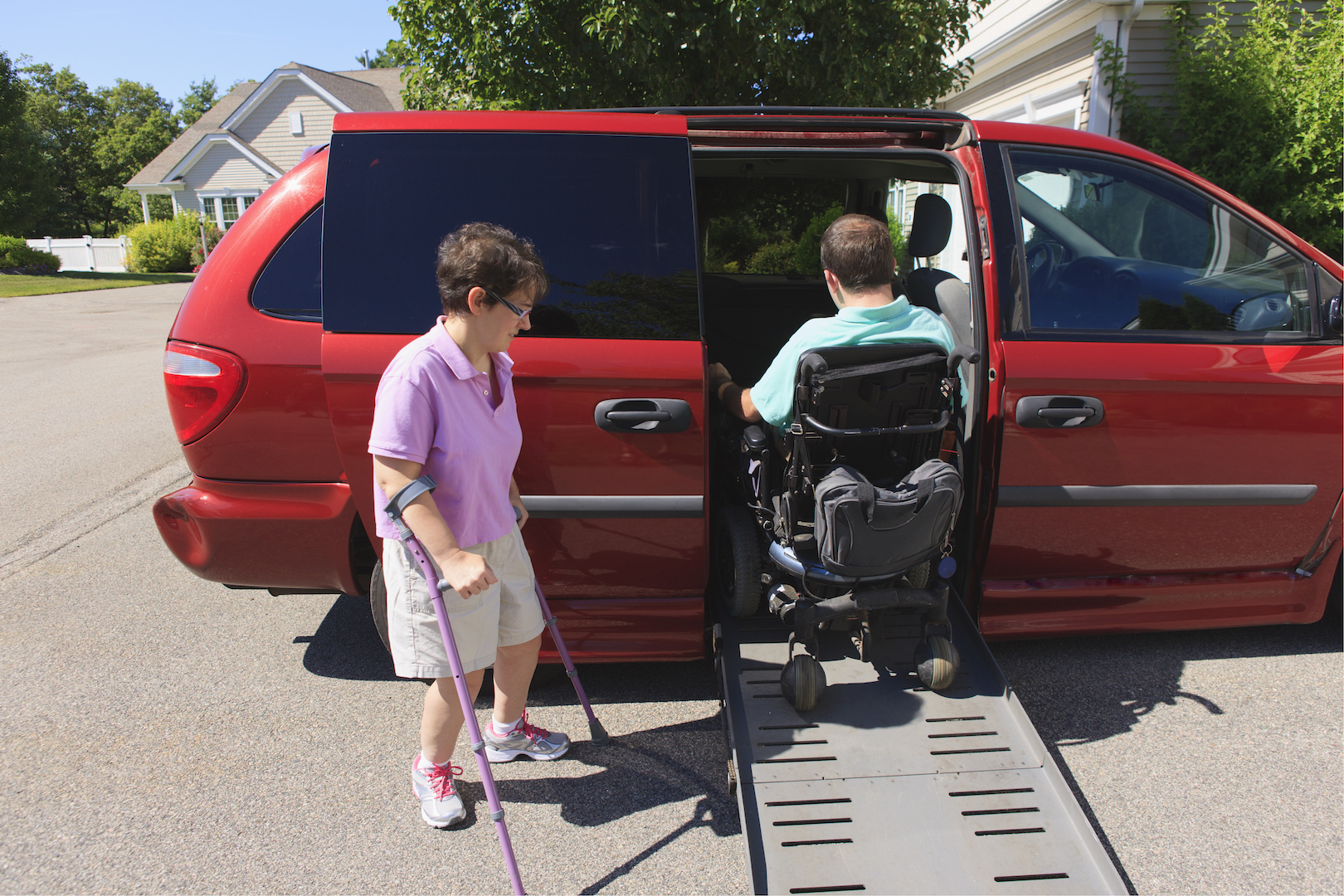Cerebral palsy: Causes, symptoms & treatment
Cerebral palsy is a life-long condition diagnosed in childhood. It's caused by brain damage that leads to muscle weakness and problems walking.

Cerebral palsy is not just one condition — it's a constellation of disorders in which changes in the brain cause problems with muscle control and weakness. These muscle problems lead to issues with balance, movement and posture. The brain changes associated with cerebral palsy can also impact hearing, seeing, thinking and learning.
In the U.S., about 1 in 345 children have cerebral palsy, according to the Centers for Disease Control and Prevention (CDC). The condition is more common in boys than girls and more common in Black children than white children.
There are several types of cerebral palsy, with slightly different symptoms. Each type can range from mild to severe. And sometimes symptoms will only appear on one side of the body or just in one set of limbs.
Related: Live Science podcast "Life's Little Mysteries" 22: Mysterious brains
"Most of [the cases we see] are mild — almost 30-40% of them are what we categorize as mild spasticity or muscle tightness of the lower limbs," said Dilip Patel, a pediatrics and adolescent medicine professor at Western Michigan University in Kalamazoo. "The vast majority — almost 70-80% — of these children have an average to normal intellectual capacity."
The disabilities caused by cerebral palsy are permanent and require lifelong support. Symptoms don't usually worsen over time, but pain and complications like arthritis may increase with age. However, most people with cerebral palsy can live just as long as people without the disease, according to the U.S. National Library of Medicine.
"The vast majority [of patients] are quite functional in society," Patel said. "As they grow up to be adolescents and adults with cerebral palsy, they can be quite functional. With support, they [have a] normal, functioning adult life."
Sign up for the Live Science daily newsletter now
Get the world’s most fascinating discoveries delivered straight to your inbox.
What causes cerebral palsy?
The symptoms of cerebral palsy are caused by changes in the cerebral motor cortex, which is the part of the brain that's in control of movement. The damage may be caused by developmental abnormalities while the fetus is growing in the womb or from a brain injury during pregnancy, birth or soon after, according to the National Institutes of Neurological Disorders and Stroke (NINDS). However, most cases of cerebral palsy are congenital, according to the CDC, meaning the condition develops when the baby is in the womb. Also with most cases, it's unclear what caused the brain damage; only a very small percentage of cases have a clear cause, Patel said.
Some cases of congenital cerebral palsy are genetic and are caused by mutations in the baby's genes that control brain development. Most cases of congenital cerebral palsy occur in babies that are born prematurely. "The single most important thing in terms of prevention of cerebral palsy would be to prevent premature birth and low birth weight deliveries, " Patel said. "Good prenatal care and preventing the risk factors that might lead to premature birth seems to be the single-most [important] factor associated with the development of cerebral palsy."
If the brain damage happens sometime between birth and two years, the disease is classified as acquired cerebral palsy. Only a small percentage of cerebral palsy is acquired after birth, according to the NINDS. The causes of acquired cerebral palsy include head injuries, infections like meningitis or encephalitis, or other problems with blood flow and too little oxygen getting to the brain, leading to brain damage.
According to NINDS, the main causes of cerebral palsy during pregnancy, birth and infancy include:
- Infections during pregnancy (toxoplasmosis and rubella) or after birth (meningitis, encephalitis or herpes)
- Bleeding in the brain — usually caused by a stroke in the fetus or baby
- Exposure to toxins like methylmercury while in the womb
- Head injuries during or after birth
- Severe and untreated jaundice after birth
According to the CDC, other factors that increase the risk of cerebral palsy include:
- The baby being too small (less than 5.5 pounds or 2.5 kilograms) or arriving too early (before 37 weeks)
- A pregnancy of multiples, including twins, triplets or more
- Maternal complications during pregnancy like blood incompatibility between the mother and fetus, seizure disorders, thyroid issues, intellectual disabilities, or excess protein in the urine
- The fetus being born breech, with its bum facing down instead of its head
- Seizures in the fetus or infant

Types of cerebral palsy
The three different types of cerebral palsy are spastic, dyskinetic and ataxic cerebral palsy. The types manifest in different ways, and each one is characterized by how it impacts the muscles and the different types of disordered movements that result. Some people with cerebral palsy have features of more than one type, which is described as mixed cerebral palsy.
Spastic cerebral palsy is the most common type, affecting about 80% of people with cerebral palsy, according to the CDC. The most common symptom is muscle stiffening, which leads to increased muscle tone and tight joints. The stiffness makes movements, including walking, awkward.
Dyskinetic cerebral palsy is typified by difficulties controlling movements in the hands, feet and limbs, leading to writhing or jerky movements. Ataxic cerebral palsy is more likely to cause issues with balance, depth perception and coordination.
Symptoms of cerebral palsy
Due to the wide range of conditions covered by the umbrella of cerebral palsy, the symptoms are numerous and varied. However, about half (50% to 60%) of children diagnosed with cerebral palsy can walk independently, according to the CDC.
"[Walking] may be delayed," Patel said, but many children with cerebral palsy "can get around the house, they can go to the bus to get to school and they can navigate the school system."
Parents worried about cerebral palsy can watch for early signs and symptoms in the first year. Before 6 months old, infants with cerebral palsy may feel too floppy or too stiff. When picked up, their heads might lag behind their bodies or they may stiffen, cross or scissor their legs.
Babies older than 6 months with cerebral palsy may have problems rolling over (in either direction), bringing their hands together, bringing their hands to their mouth, or only using one hand to reach out.
Once infants are over 10 months old, signs of cerebral palsy include crawling in a lopsided manner, only using one leg or one hand to push off and not being able to pull up to standing.
Symptoms of cerebral palsy in general include:
- Tight muscles and joints or floppy muscles and joints
- Developmental delays meeting physical milestones
- Abnormal walking — including scissoring the legs or walking on toes
- Muscle weakness or paralysis
- Abnormal jerky or twisty movements (called spasticity; present in spastic cerebral paslsy)
- Tremors, or shaking muscles leading to a lack of coordination (present in ataxic cerebral palsy)
Other symptoms and complications of cerebral palsy include:
- Learning disabilities, even with average intelligence
- Speech problems
- Hearing or vision problems
- Seizures
- Pain with aging
- Difficulty eating, chewing or swallowing, or excessive drooling
- Vomiting or constipation
- Slow growth
- Breathing irregularities
- Difficulty holding in urine
Some of these muscle dysfunctions may make communication difficult, but it doesn't have a direct effect on intelligence in most cases. "Someone who has cerebral palsy has got tight muscles, maybe not able to walk yet, maybe their speech is slow," Patel said. "But that does not mean they don't have a normal IQ — they have normal to even above average IQ."

How is cerebral palsy diagnosed?
Children with cerebral palsy often start showing symptoms in the first months of life, including developmental delays or seeming either too stiff or too floppy.
"Parents typically come when the infant or young child is not doing something they expect them to be doing," Patel said, such as not walking or standing at 1 year old. But the most common reason for a physical developmental delay is just natural variation — "developmental trajectories are not fixed, there is a range," he said.
Because of these normal variations in development it may take until the child is 2 years old or more before doctors can give a clear diagnosis of cerebral palsy. "We don't jump to conclusions too early," Patel said. "As we observe a child who lags in the developmental attainment of certain milestones, [often] by two years, they have caught up," if they are otherwise healthy, he said.
Cerebral palsy is diagnosed by monitoring the child's development over time and performing various tests that look at the brain, including ultrasound, CT or MRI scans and electroencephalogram, which analyzes the electrical activity inside the brain.
Treatments for cerebral palsy
Treatments for people with cerebral palsy vary, but they aim to make it easier for people with the condition to live independently and lessen problematic symptoms or potential complications.
Some of the medications used to treat symptoms of cerebral palsy include drugs that reduce the frequency of seizures, botox to loosen spastic muscles, muscle relaxants to reduce tremors and pain relievers to help with the pain. People with cerebral palsy may also undergo surgeries to help reduce gastric reflux, pain and spasticity, help them eat, or release stiffened joints. They may also use assistive devices, such as communication computers and leg braces or wheelchairs.
There is no cure for cerebral palsy, but treatments can improve capabilities, especially when started early. Some of the significant interventions for people with cerebral palsy are occupational, recreational, physical and speech therapies to improve functioning and help work through developmental delays. The earlier these therapies start, the bigger impact they can have in the long run, according to NINDS.
Early recognition and supportive treatments work together to promote better outcomes for people with cerebral palsy.
Additional resources
- Here are some key facts about cerebral palsy from the CDC.
- Find more information and helpful resources about cerebral palsy from the Cerebral Palsy Alliance Research Foundation.
- Book recommendation: "Teaching Motor Skills to Children With Cerebral Palsy And Similar Movement Disorders: A Guide for Parents And Professionals" (Woodbine House, 2006) by Sieglinde Martin.
This article is for informational purposes only, and is not meant to offer medical advice.
Jennifer Welsh is a Connecticut-based science writer and editor and a regular contributor to Live Science. She also has several years of bench work in cancer research and anti-viral drug discovery under her belt. She has previously written for Science News, VerywellHealth, The Scientist, Discover Magazine, WIRED Science, and Business Insider.











